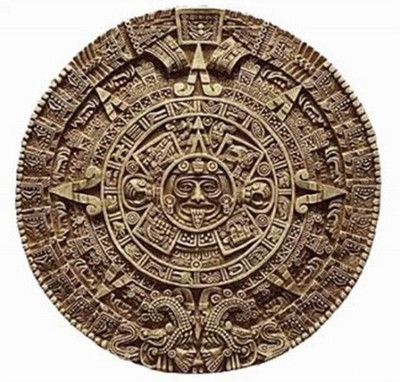You survived the Mayan apocalypse, or at least transitioned to the next baktun, number 14 according to the Mayan calendar. But what real lessons does this ancient culture hold?
瑪雅人的末日預言沒有實現,你活了下來。根據瑪雅歷法,我們現在正處于第14個白克頓周期。然而這個古老文化留給我們什么教訓呢?
First and foremost, the Maya are a case study in adaptation. Their complex civilization of powerful city-states collapsed, and the jungle retook those urban centers. But the Mayan people endured, today being the principle ethnic population of parts of Mexico, Guatemala and Belize.
首先,瑪雅是關于適應性的個案研究。他們鼎盛一時、錯綜復雜的城邦文明瓦解了,叢林再次占領了城市中心。但是瑪雅人所承受的一切都由部分位于墨西哥、危地馬拉和伯利茲的少數民族人群在承擔。

European invaders did not end the era of the Mayan city-state. Although it was descendants of those Europeans who came up with this apocalypse mumbo-jumbo.
歐洲入侵者并沒有結束瑪雅的城邦時代。盡管是這些歐洲人的后代想出了這種胡編亂造的末日預言。
Research shows that what laid low Mayan society was something more insidious: climate change. A subtle shift in weather patterns brought less rain and the Mayan civilization was simply unable to cope with a prolonged dry period punctuated by several severe droughts.
研究顯示令瑪雅社會毀滅的原因是氣候變化,這更令人感到不安。氣候模式的微小變化會導致降雨量減少,瑪雅文明的毀滅就是因為無法應對幾次嚴重的干旱以及隨之而來的持久的干燥天氣。
Given that our highly complex civilization is also facing climate change, it might make sense to look back to the Maya for a glimpse of our future. Today much of the former Mayan city-states are nature preserves, dotted by ruins. Will we do better when faced with crippling and long-lasting drought in this, the 14th baktun?
鑒于我們高度發達的文明也正經受著氣候變化的考驗,也許回顧一下瑪雅的歷史,看一眼我們的將來人類就會明白。如今,瑪雅的大多數城邦都已變成自然保護區,周圍散布著零星的廢墟。面對嚴重、持久的干旱,處在第14白克頓周期的我們會做得更好嗎?












